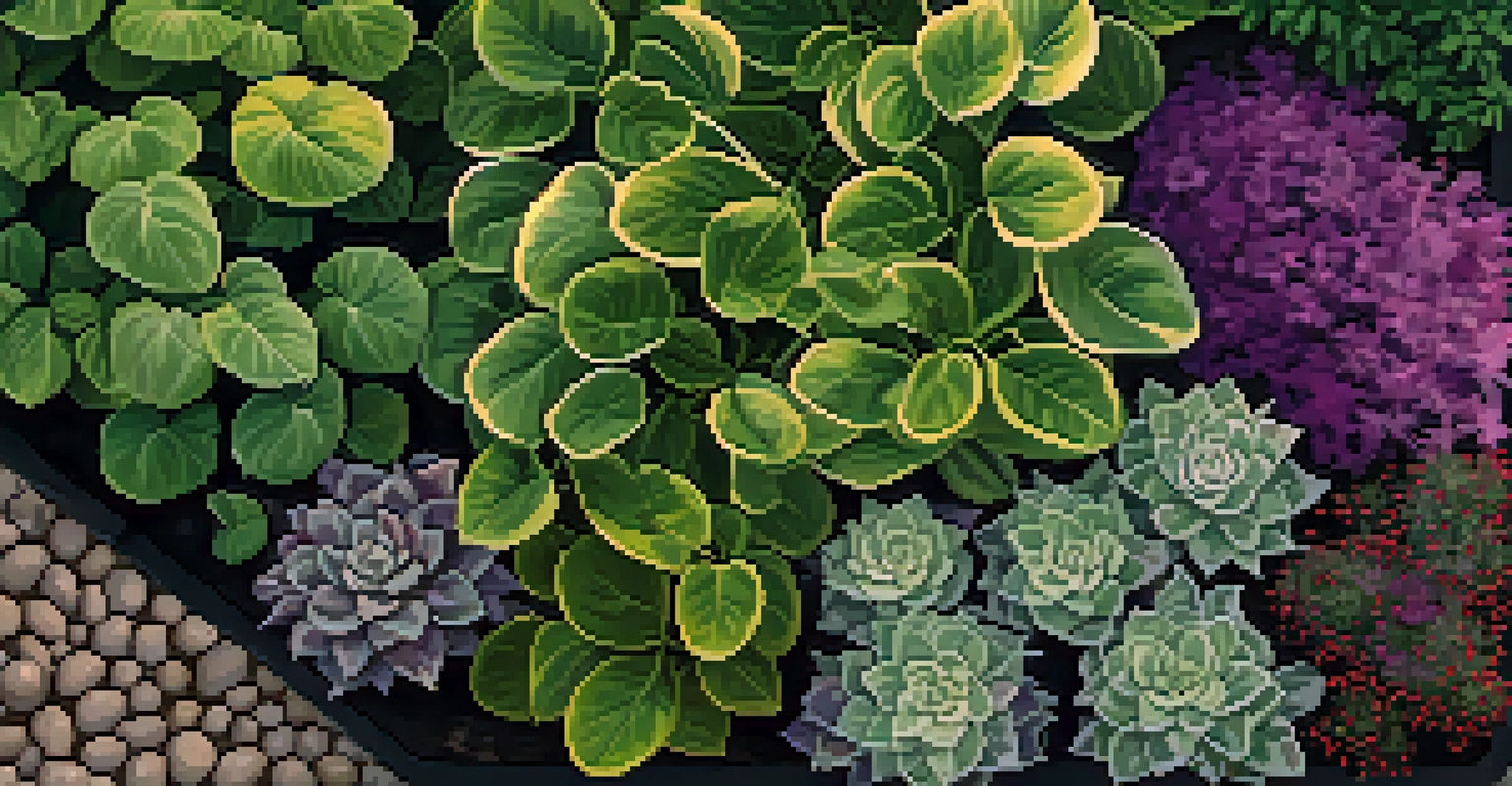Guide to Identifying Nutrient Deficiencies in Your Plants

Understanding Nutrient Deficiencies in Plants
Nutrient deficiencies can significantly impact plant health and growth. Just as humans need a balanced diet to thrive, plants require specific nutrients to flourish. When a plant lacks essential nutrients, it can exhibit various symptoms that signal trouble ahead.
The health of soil is the foundation for the health of plants.
Common nutrients that plants need include nitrogen, phosphorus, potassium, and micronutrients like iron and magnesium. Each of these plays a critical role in plant development, from root growth to flowering. Understanding what each nutrient does can help you diagnose issues more effectively.
By recognizing the signs of nutrient deficiencies early, you can take action to remedy the situation. This proactive approach not only helps your plants recover but also ensures a bountiful harvest in your garden.
Signs of Nitrogen Deficiency in Plants
Nitrogen is crucial for plant growth, particularly for producing lush green leaves. If you notice yellowing leaves, especially older ones, it may be a sign that your plant is lacking nitrogen. This deficiency can lead to stunted growth and poor overall health.

In addition to yellowing leaves, nitrogen deficiency can also cause plants to become spindly or weak. A plant that should be robust might instead look frail and fragile. This is because nitrogen is essential for the production of chlorophyll, which helps in photosynthesis.
Nutrient Deficiencies Affect Growth
Plants require specific nutrients, and deficiencies can lead to visible symptoms like yellowing leaves and stunted growth.
To fix nitrogen deficiency, consider using organic fertilizers like compost or fish emulsion. These can provide a quick boost to your plants, helping them regain their vibrant green color and strength.
Identifying Phosphorus Deficiency in Your Plants
Phosphorus is vital for energy transfer and photosynthesis in plants. A deficiency often manifests as dark green or purplish leaves, particularly on the younger foliage. This can be quite alarming, but understanding the signs can guide you towards a solution.
Plants are like people; they need nutrients to thrive.
In addition to color changes, plants with phosphorus deficiency may also produce fewer flowers and fruits. This can significantly affect your garden's productivity, especially if you're growing fruits or flowering plants. Healthy phosphorus levels are essential for robust root development and overall yield.
To address this deficiency, consider adding bone meal or rock phosphate to your soil. These organic options can help replenish phosphorus levels and promote healthier, more productive plants.
Recognizing Potassium Deficiency Symptoms
Potassium is often referred to as the 'regulator' of many plant processes. When a plant lacks potassium, you might notice browning at the leaf edges and curling leaves. These symptoms can be alarming and often signify that your plant is struggling to manage water and nutrient uptake.
Additionally, potassium deficiency can lead to weakened stems and increased susceptibility to diseases. This is because potassium plays a crucial role in strengthening cell walls and overall plant resilience. Without it, your plants may not only look unhealthy but also be more prone to pests and diseases.
Identifying Key Nutrient Signs
Recognizing signs of deficiencies in nitrogen, phosphorus, and potassium can guide you in taking corrective actions for your plants.
To remedy potassium deficiency, consider using wood ash or potassium sulfate. These amendments can help restore balance and give your plants the strength they need to thrive.
Common Micronutrient Deficiencies to Watch For
Micronutrients, though required in smaller quantities, are just as important for plant health. Deficiencies in elements like iron, magnesium, and calcium can lead to visible signs, such as leaf discoloration and poor growth. Each micronutrient deficiency has unique symptoms, making it essential to pay attention to your plants' needs.
For example, iron deficiency often presents as yellowing leaves with green veins, known as interveinal chlorosis. On the other hand, magnesium deficiency can cause older leaves to turn yellow while the veins remain green. Recognizing these specific signs can help you pinpoint the exact nutrient your plant needs.
To address micronutrient deficiencies, consider using chelated fertilizers or specific nutrient blends designed for your plants. These options can provide a quick fix and support long-term health.
Environmental Factors Influencing Nutrient Availability
Nutrient availability is not solely dependent on what you add to the soil; environmental conditions also play a significant role. Factors like soil pH, moisture levels, and temperature can affect how well your plants access nutrients. For example, overly acidic or alkaline soil can lock essential nutrients away from plant roots.
Additionally, poor drainage can lead to waterlogged conditions, which may hinder root growth and nutrient uptake. On the other hand, drought conditions can stress plants, making them less efficient at absorbing nutrients. Understanding these environmental factors can help you create a more conducive growing environment.
Prevention Through Best Practices
Maintaining healthy soil and practicing crop rotation can help prevent nutrient deficiencies and promote a thriving garden.
Regularly testing your soil can provide insight into its pH and nutrient levels. This information allows you to adjust your gardening practices accordingly, ensuring your plants can access the nutrients they need.
How to Test for Nutrient Deficiencies in Plants
Testing for nutrient deficiencies can seem daunting, but it doesn't have to be. You can start by observing your plants for any unusual signs or growth patterns. If you notice anything concerning, it might be worth conducting a soil test to identify specific deficiencies.
Soil test kits are readily available at garden centers or online, allowing you to measure pH levels and nutrient concentrations. These kits often provide instructions on how to collect samples and interpret the results. Armed with this information, you can make informed decisions about how to amend your soil.

Another option is to consult with local agricultural extension services, which often provide testing services and expert advice. This can be an excellent way to ensure your plants get the right nutrients without guesswork.
Best Practices for Preventing Nutrient Deficiencies
Prevention is always better than cure, especially when it comes to nutrient deficiencies. One of the best practices is to maintain healthy soil through regular amendments and organic matter additions. Compost not only enriches the soil but also promotes beneficial microorganisms that enhance nutrient availability.
Additionally, rotating crops can help prevent nutrient depletion in your garden. Different plants have varying nutrient needs, and rotating them can allow the soil to recover and maintain balance. This practice can also help disrupt pest and disease cycles.
Finally, ensure you're watering appropriately, as both overwatering and underwatering can affect nutrient uptake. By staying observant and proactive, you can create a thriving garden ecosystem that supports healthy plant growth.